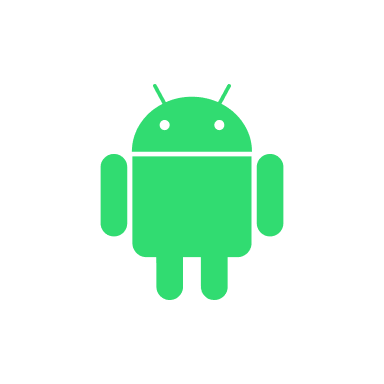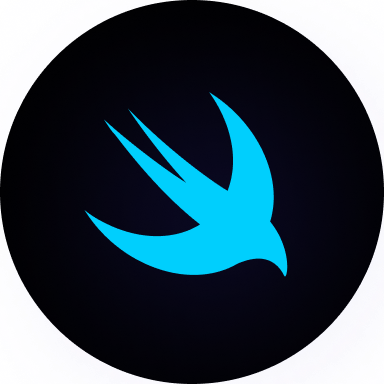ShazamKit
Add to favorites
Build a simple Shazam clone and perform music recognition
SwiftUI Advanced Handbook
1
Firebase Auth
8:18
2
Read from Firestore
8:01
3
Write to Firestore
5:35
4
Join an Array of Strings
3:33
5
Data from JSON
5:08
6
HTTP Request
6:31
7
WKWebView
5:25
8
Code Highlighting in a WebView
5:11
9
Test for Production in the Simulator
1:43
10
Debug Performance in a WebView
1:57
11
Debug a Crash Log
2:22
12
Simulate a Bad Network
2:11
13
Archive a Build in Xcode
1:28
14
Apollo GraphQL Part I
6:21
15
Apollo GraphQL Part 2
6:43
16
Apollo GraphQL Part 3
5:08
17
Configuration Files in Xcode
4:35
18
App Review
5:43
19
ImagePicker
5:06
20
Compress a UIImage
3:32
21
Firebase Storage
11:11
22
Search Feature
9:13
23
Push Notifications Part 1
5:59
24
Push Notifications Part 2
6:30
25
Push Notifications Part 3
6:13
26
Network Connection
6:49
27
Download Files Locally Part 1
6:05
28
Download Files Locally Part 2
6:02
29
Offline Data with Realm
10:20
30
HTTP Request with Async Await
6:11
31
Xcode Cloud
9:23
32
SceneStorage and TabView
3:52
33
Network Connection Observer
4:37
34
Apollo GraphQL Caching
9:42
35
Create a model from an API response
5:37
36
Multiple type variables in Swift
4:23
37
Parsing Data with SwiftyJSON
9:36
38
ShazamKit
12:38
39
Firebase Remote Config
9:05
Infrastructure Setup
Before we right any code, there are a couple things we need to do.
- In Signing and Capabilities, add the Inter-App Audio capability.

- In the Info.plist file, add the key Privacy - Microphone Usage Description and give a description as the value. This will be shown when the app accesses a device’s microphone.

- On your Apple Developer account, go to Certificates, Identifiers, and Profiles (https://developer.apple.com/account/resources/identifiers/list) and scroll down to where you see your Bundle ID. Then, under App Services, be sure to enable ShazamKit. This is very important as otherwise, the audio recognition will not work.

Creating the View Model
To communicate our ShazamKit code with our SwiftUI code, we need to create a view model to handle all the music recognition logic. Create a new file called ViewModel.swift . This file will contain all the code related to audio recording and music recognition.
import AVKit
import ShazamKit
import Combine
@MainActor
class ViewModel: NSObject, ObservableObject {
@Published var currentItem: SHMediaItem? = nil
@Published var shazaming = false
private let session = SHSession()
private let audioEngine = AVAudioEngine()
override init() {
super.init()
session.delegate = self
}
private func prepareAudioRecording() throws {
let audioSession = AVAudioSession.sharedInstance()
try audioSession.setCategory(.record)
try audioSession.setActive(true, options: .notifyOthersOnDeactivation)
}
private func generateSignature() {
let inputNode = audioEngine.inputNode
let recordingFormat = inputNode.outputFormat(forBus: .zero)
inputNode.installTap(onBus: .zero, bufferSize: 1024, format: recordingFormat) { [weak session] buffer, _ in
session?.matchStreamingBuffer(buffer, at: nil)
}
}
private func startAudioRecording() throws {
try audioEngine.start()
shazaming = true
}
public func startRecognition() {
do {
if audioEngine.isRunning {
stopRecognition()
return
}
try prepareAudioRecording()
generateSignature()
try startAudioRecording()
} catch {
print(error.localizedDescription)
}
}
public func stopRecognition() {
shazaming = false
audioEngine.stop()
audioEngine.inputNode.removeTap(onBus: .zero)
}
}
extension ViewModel: SHSessionDelegate {
func session(_ session: SHSession, didFind match: SHMatch) {
guard let mediaItem = match.mediaItems.first else { return }
Task {
self.currentItem = mediaItem
}
}
}Using our View Model
Heading back to ContentView.swift , we can now create an instance of our view model and update our UI in order to be more functional and perform music recognition.
@StateObject private var viewModel = ViewModel()
var body: some View {
NavigationView {
VStack(spacing: 8) {
Spacer()
AsyncImage(url: viewModel.currentItem?.artworkURL) { image in
image.image?.resizable().scaledToFit()
}
.frame(width: 200, height: 200, alignment: .center)
Text(viewModel.currentItem?.title ?? "Press the Button below to Shazam")
.font(.title3.bold())
Text(viewModel.currentItem?.artist ?? "")
.font(.body)
Spacer()
Spacer()
if viewModel.shazaming == true {
Button("Stop Shazaming") {
viewModel.stopRecognition()
}
.buttonStyle(.borderedProminent)
.tint(.red)
} else {
Button("Start Shazaming") {
viewModel.startRecognition()
}
.buttonStyle(.borderedProminent)
}
}
.padding()
.navigationTitle("Shazam")
}
} Run the app on a physical device and when you click on the button, you should be able to play a song and have the app recognize the song and display information about it on the screen.
Run the app on a physical device and when you click on the button, you should be able to play a song and have the app recognize the song and display information about it on the screen.
Learn with videos and source files. Available to Pro subscribers only.
Purchase includes access to 50+ courses, 320+ premium tutorials, 300+ hours of videos, source files and certificates.
Templates and source code
Download source files
Download the videos and assets to refer and learn offline without interuption.
Design template
Source code for all sections
Video files, ePub and subtitles
Videos
Assets
ePub
Subtitles
1
Firebase Auth
How to install Firebase authentification to your Xcode project
8:18
2
Read from Firestore
Install Cloud Firestore in your application to fetch and read data from a collection
8:01
3
Write to Firestore
Save the data users input in your application in a Firestore collection
5:35
4
Join an Array of Strings
Turn your array into a serialized String
3:33
5
Data from JSON
Load data from a JSON file into your SwiftUI application
5:08
6
HTTP Request
Create an HTTP Get Request to fetch data from an API
6:31
7
WKWebView
Integrate an HTML page into your SwiftUI application using WKWebView and by converting Markdown into HTML
5:25
8
Code Highlighting in a WebView
Use Highlight.js to convert your code blocks into beautiful highlighted code in a WebView
5:11
9
Test for Production in the Simulator
Build your app on Release scheme to test for production
1:43
10
Debug Performance in a WebView
Enable Safari's WebInspector to debug the performance of a WebView in your application
1:57
11
Debug a Crash Log
Learn how to debug a crash log from App Store Connect in Xcode
2:22
12
Simulate a Bad Network
Test your SwiftUI application by simulating a bad network connection with Network Link Conditionner
2:11
13
Archive a Build in Xcode
Archive a build for beta testing or to release in the App Store
1:28
14
Apollo GraphQL Part I
Install Apollo GraphQL in your project to fetch data from an API
6:21
15
Apollo GraphQL Part 2
Make a network call to fetch your data and process it into your own data type
6:43
16
Apollo GraphQL Part 3
Display the data fetched with Apollo GraphQL in your View
5:08
17
Configuration Files in Xcode
Create configuration files and add variables depending on the environment - development or production
4:35
18
App Review
Request an app review from your user for the AppStore
5:43
19
ImagePicker
Create an ImagePicker to choose a photo from the library or take a photo from the camera
5:06
20
Compress a UIImage
Compress a UIImage by converting it to JPEG, reducing its size and quality
3:32
21
Firebase Storage
Upload, delete and list files in Firebase Storage
11:11
22
Search Feature
Implement a search feature to filter through your content in your SwiftUI application
9:13
23
Push Notifications Part 1
Set up Firebase Cloud Messaging as a provider server to send push notifications to your users
5:59
24
Push Notifications Part 2
Create an AppDelegate to ask permission to send push notifications using Apple Push Notifications service and Firebase Cloud Messaging
6:30
25
Push Notifications Part 3
Tie everything together and test your push notifications feature in production
6:13
26
Network Connection
Verify the network connection of your user to perform tasks depending on their network's reachability
6:49
27
Download Files Locally Part 1
Download videos and files locally so users can watch them offline
6:05
28
Download Files Locally Part 2
Learn how to use the DownloadManager class in your views for offline video viewing
6:02
29
Offline Data with Realm
Save your SwiftUI data into a Realm so users can access them offline
10:20
30
HTTP Request with Async Await
Create an HTTP get request function using async await
6:11
31
Xcode Cloud
Automate workflows with Xcode Cloud
9:23
32
SceneStorage and TabView
Use @SceneStorage with TabView for better user experience on iPad
3:52
33
Network Connection Observer
Observe the network connection state using NWPathMonitor
4:37
34
Apollo GraphQL Caching
Cache data for offline availability with Apollo GraphQL
9:42
35
Create a model from an API response
Learn how to create a SwiftUI model out of the response body of an API
5:37
36
Multiple type variables in Swift
Make your models conform to the same protocol to create multiple type variables
4:23
37
Parsing Data with SwiftyJSON
Make API calls and easily parse data with this JSON package
9:36
38
ShazamKit
Build a simple Shazam clone and perform music recognition
12:38
39
Firebase Remote Config
Deliver changes to your app on the fly remotely
9:05
Meet the instructor
We all try to be consistent with our way of teaching step-by-step, providing source files and prioritizing design in our courses.
Sai Kambampati
Student. Engineer. Designer. Not always in that order.
Student at UCSC constantly learning about new technologies, building innovative mobile apps, and designing breakthrough products.
6 courses - 24 hours

Jetpack Compose for Designers
Learn the fundamentals of Jetpack Compose to build a beautiful Android application using Kotlin and Android Studio
4 hrs

UIKit for iOS 15 Part 2
Learn advanced techniques about animations, layout, localization, Firebase, Xcode Cloud, and more!
3 hrs

UIKit for iOS 15
Design and code a UIKit app for iOS 15 with storyboards, custom layouts, scroll detection, and accessibility using Xcode 13
5 hrs

Advanced Development in SwiftUI
Advance your SwiftUI skills by developing an app using Core Data, CloudKit, In App Purchases, Sign In With Apple, and Firebase Authentication
4 hrs

Flutter for Designers Part 2
Continuing on from the previous Flutter for Designers course, this course has a heavier emphasis on using Firebase API's to combine Firebase and Flutter. There will be a lesser emphasis on creating front-end Flutter UI and more emphasis on how to build functional applications capable of being shipped to the App Store. A review of the previous course and the Dart programming language will be very helpful. That being said, you will also be introduced to some new Flutter widgets and packages.
4 hrs

Flutter for Designers
Flutter is a relatively new toolkit that makes it easy to build cross-platform apps that look gorgeous and is easy to use. By utilizing a platform's native components we'll build an app that can run on both iOS and Android that will look and feel like it was developed natively. Furthermore we'll see how with one single codebase, Flutter provides us with native performance, hot reload for fast development, and access to beautiful, native components.
4 hrs
